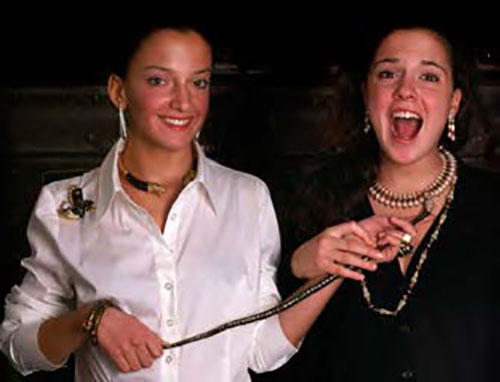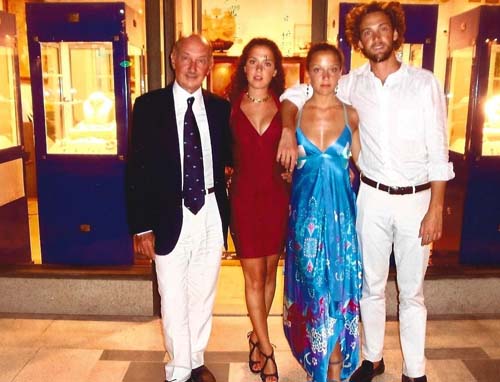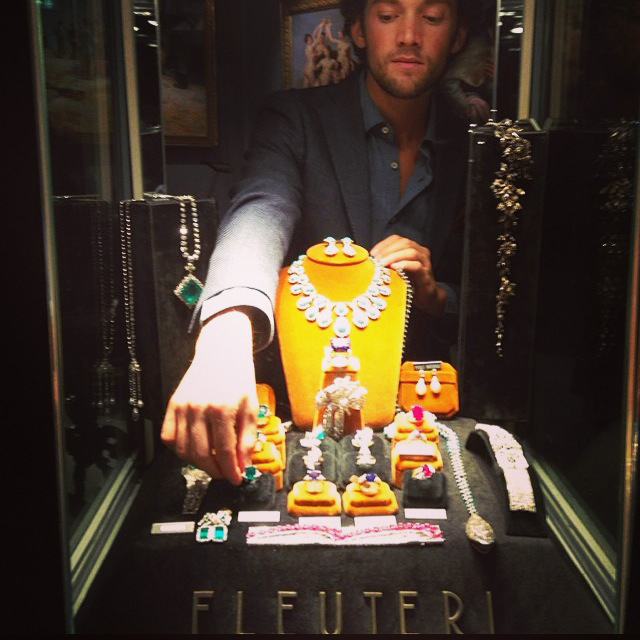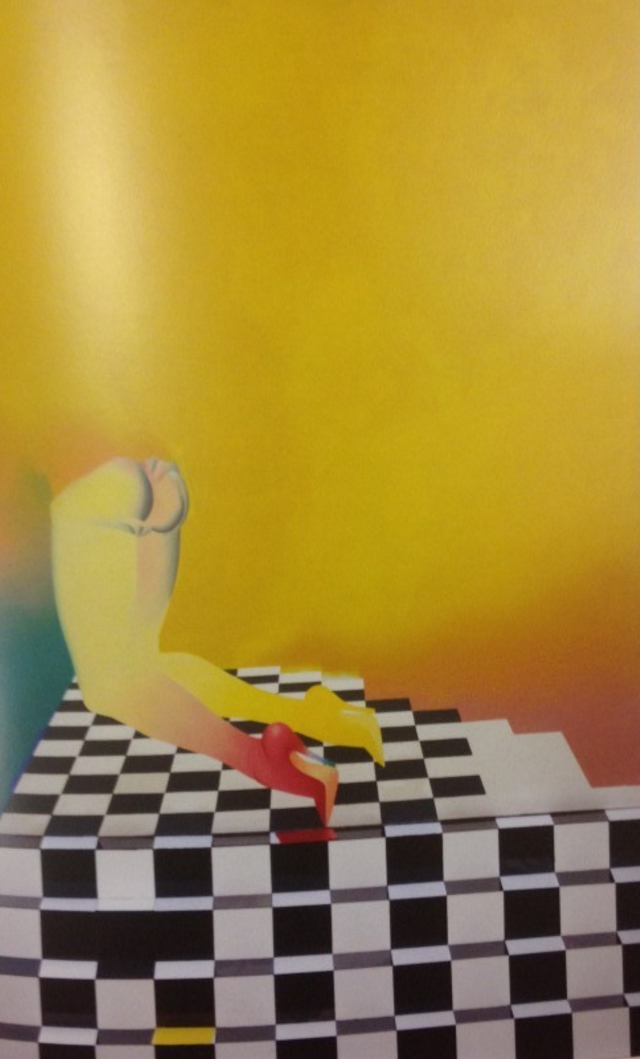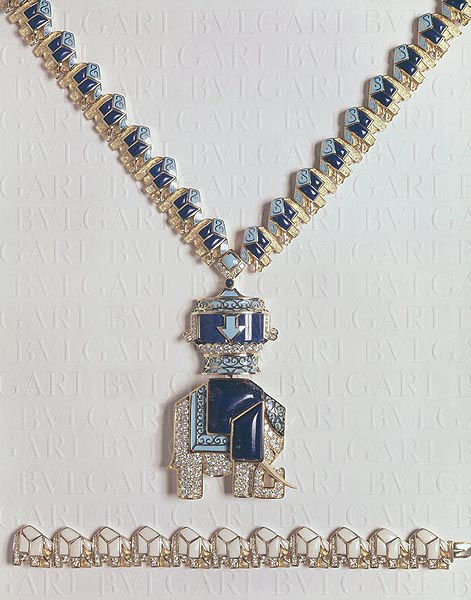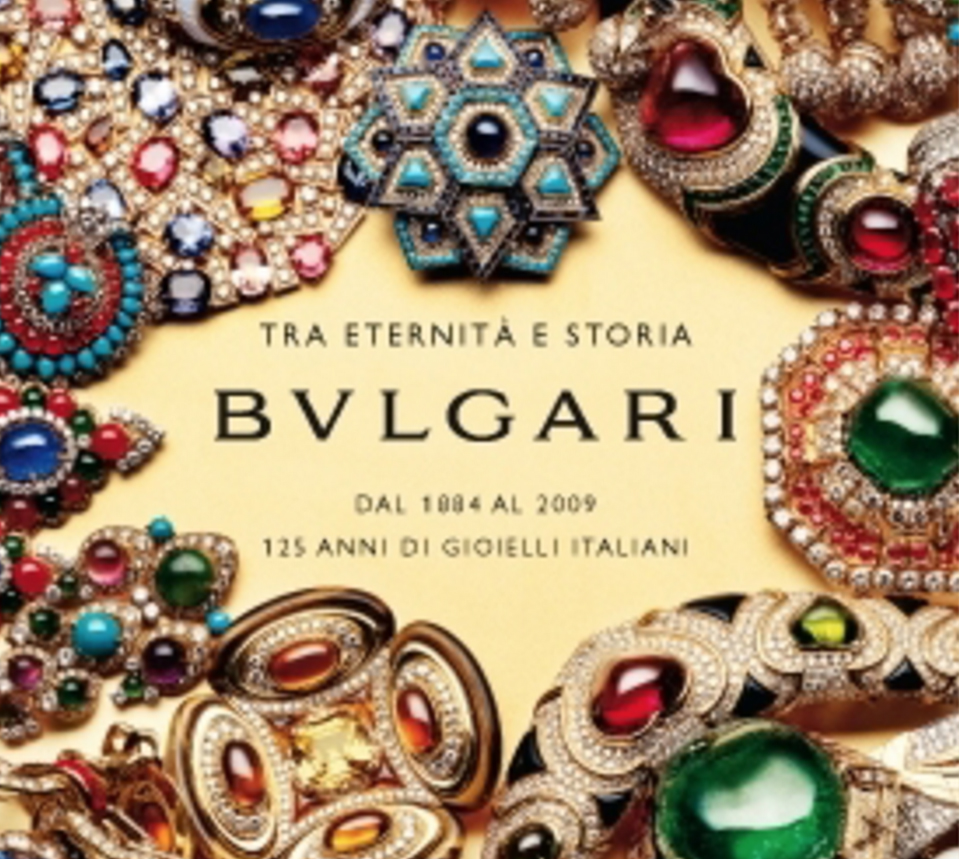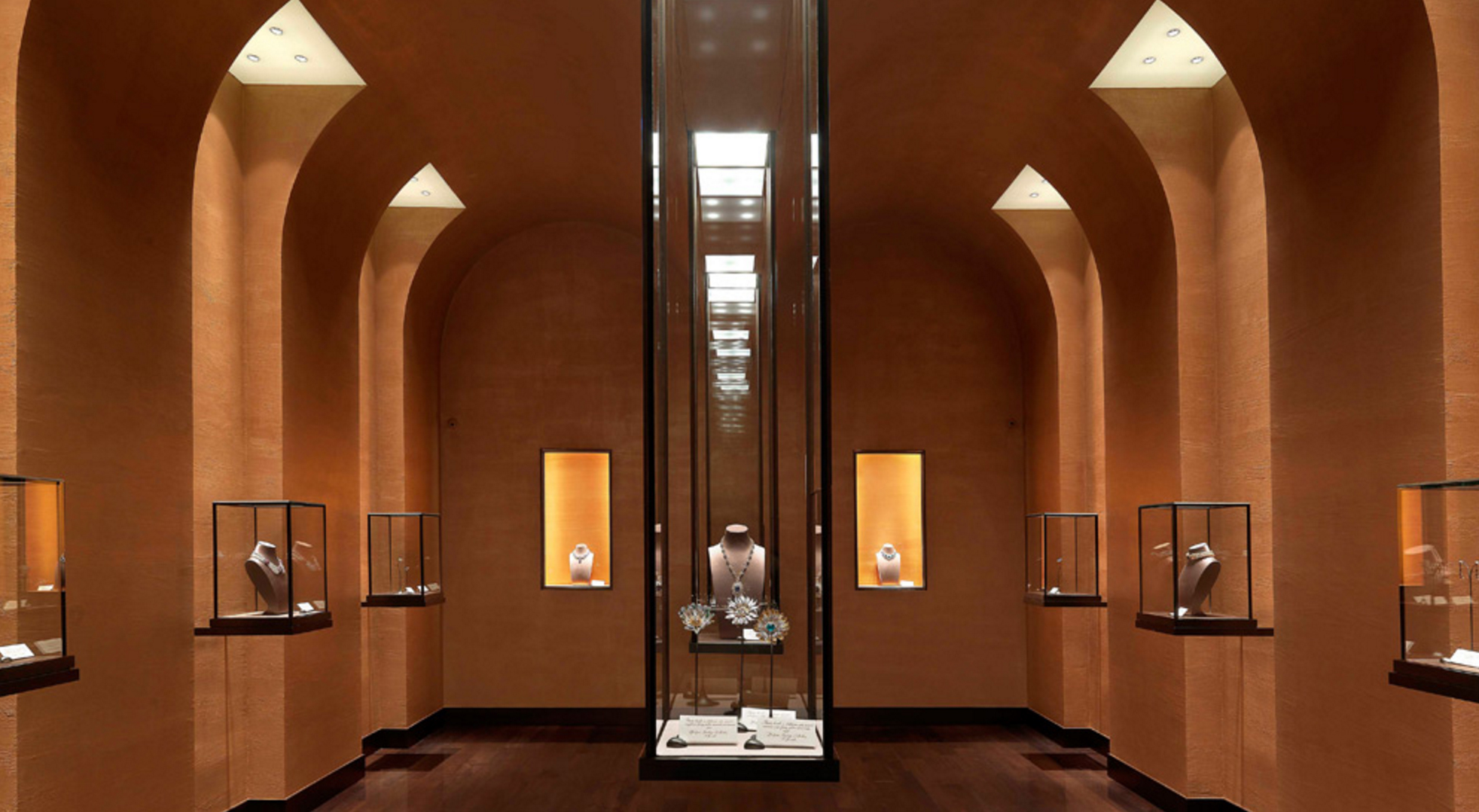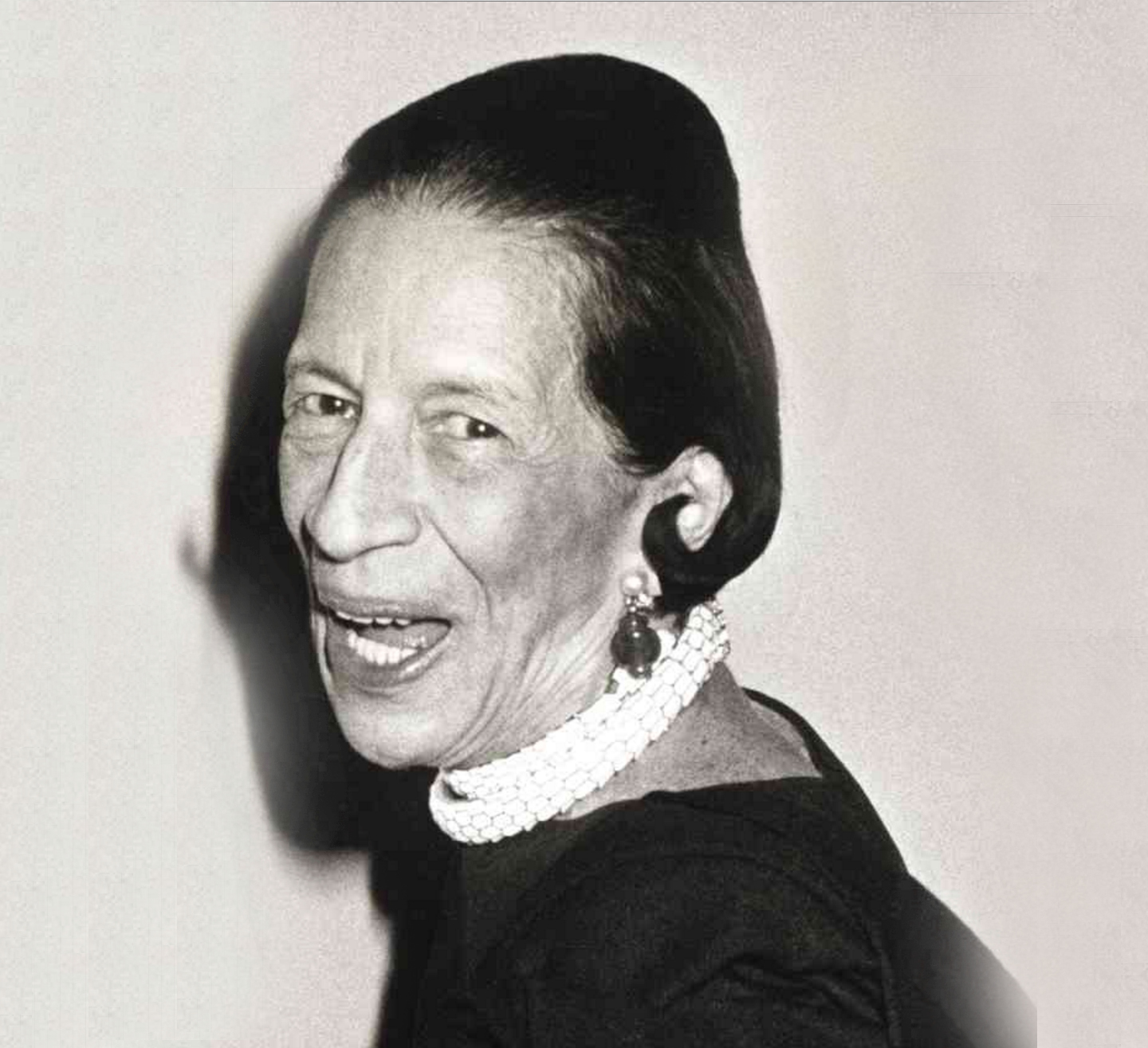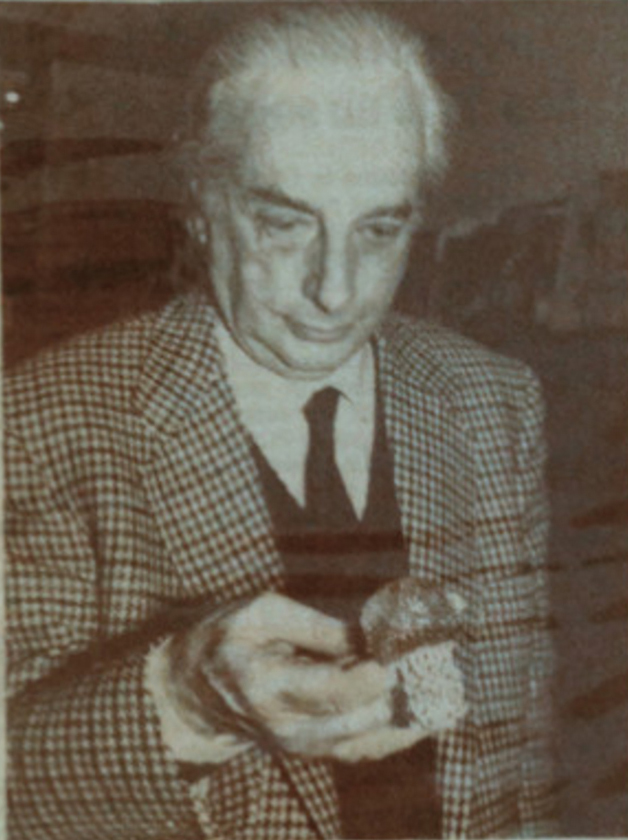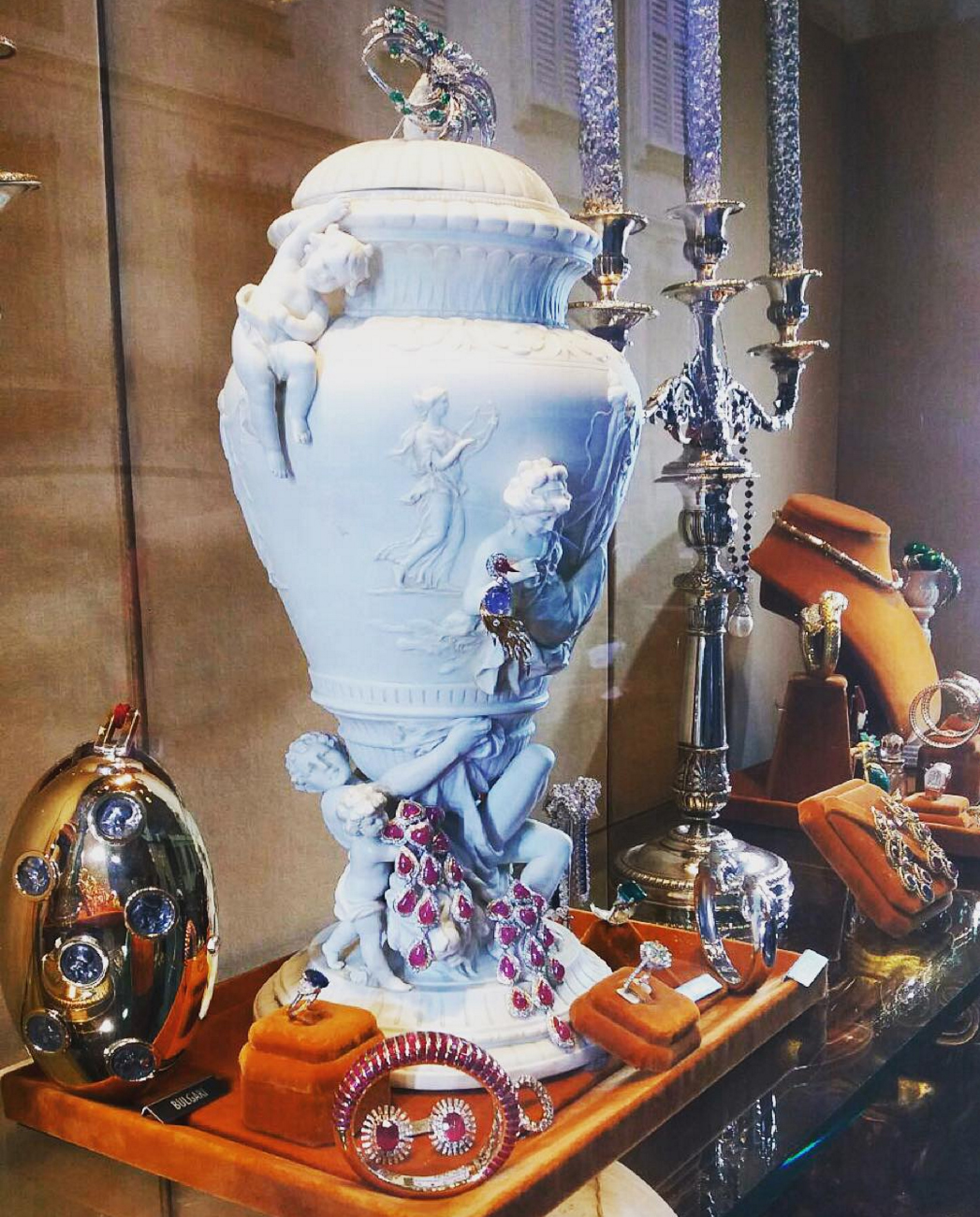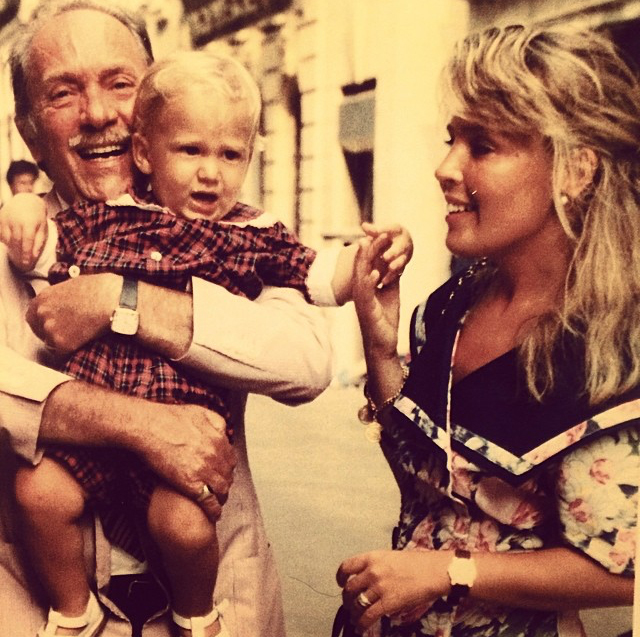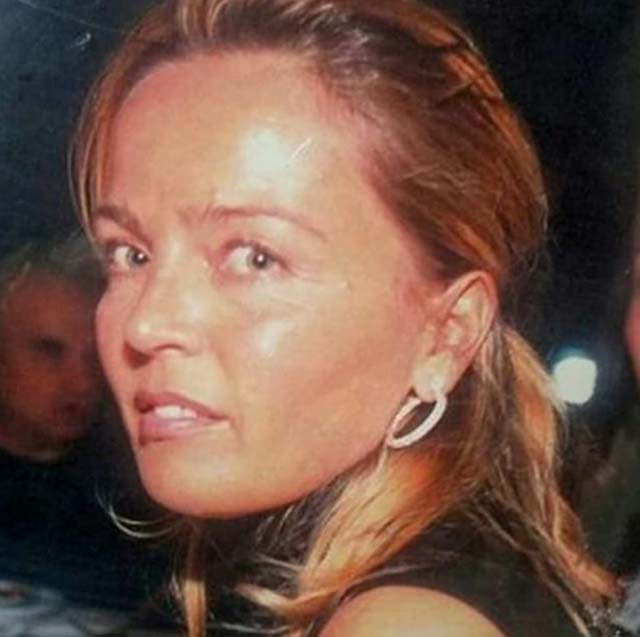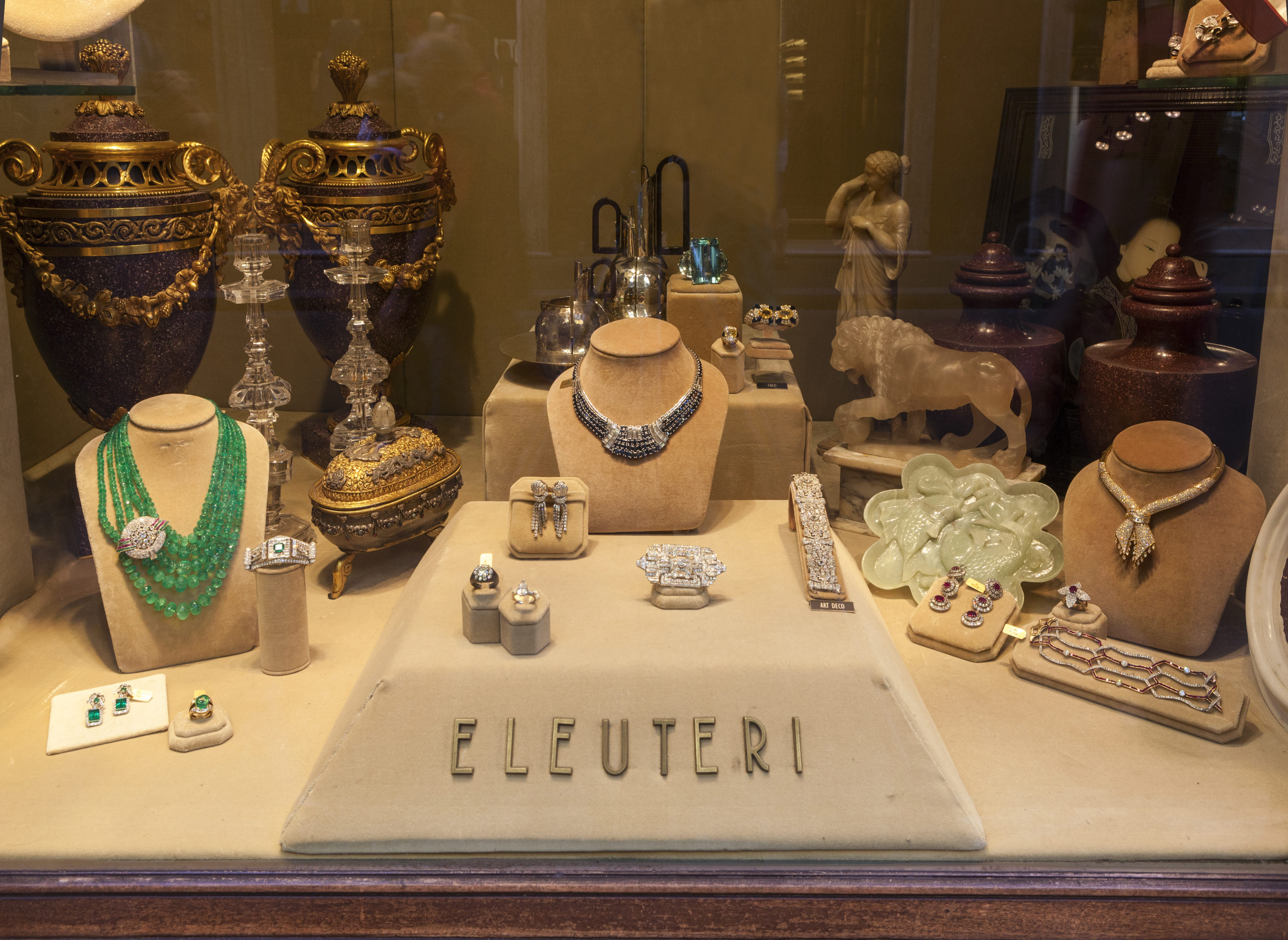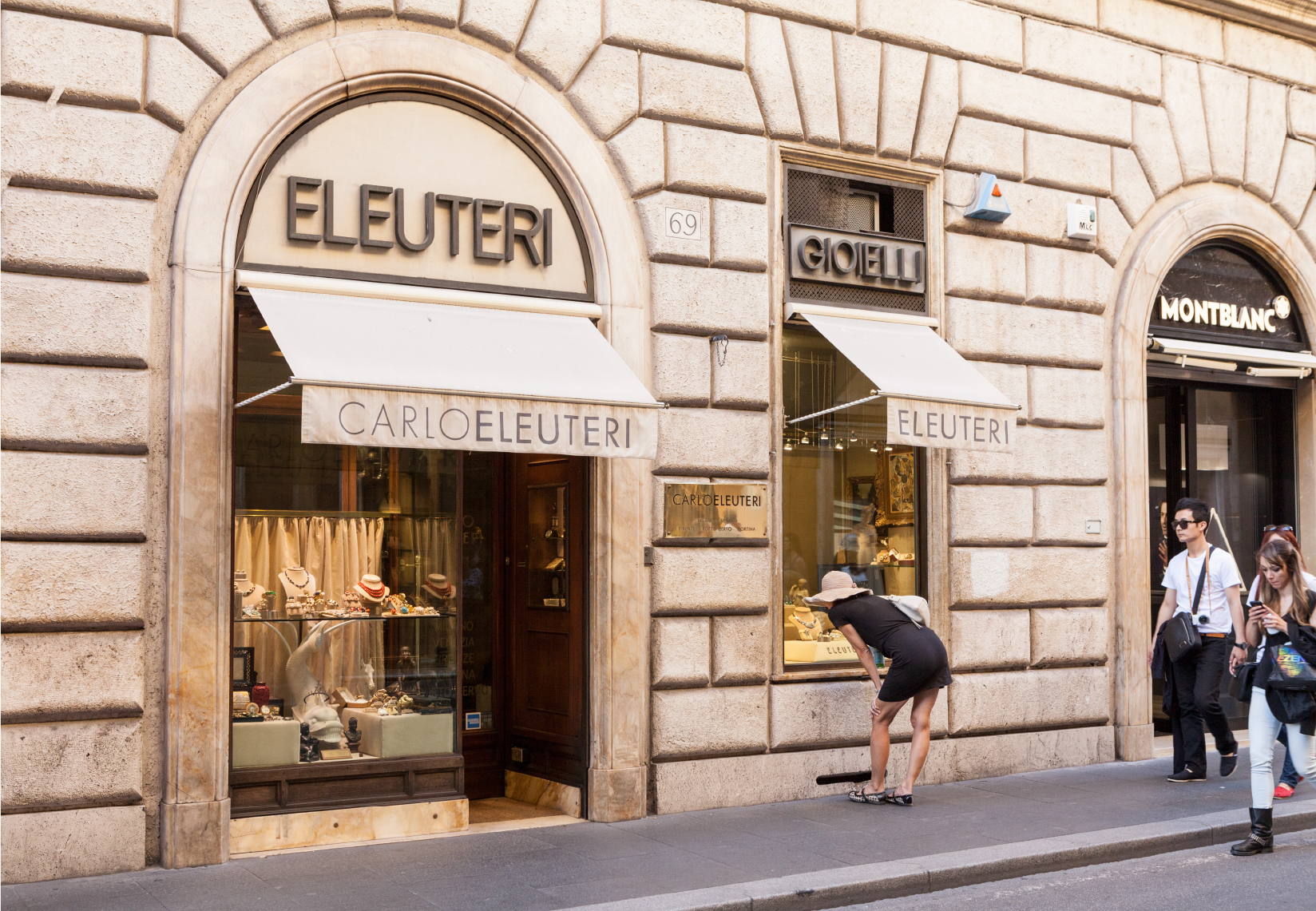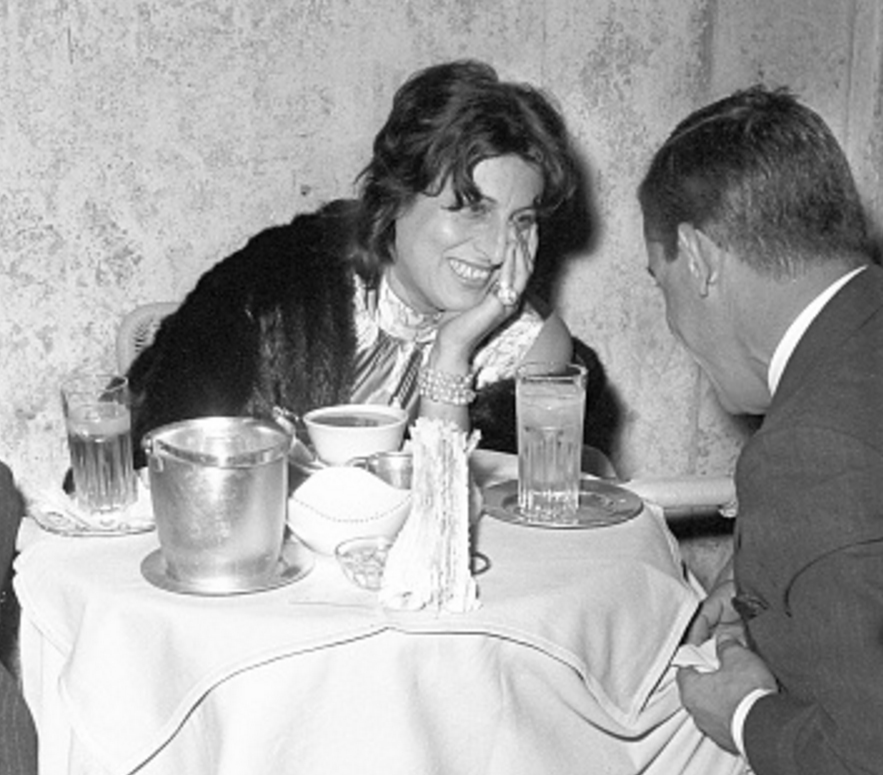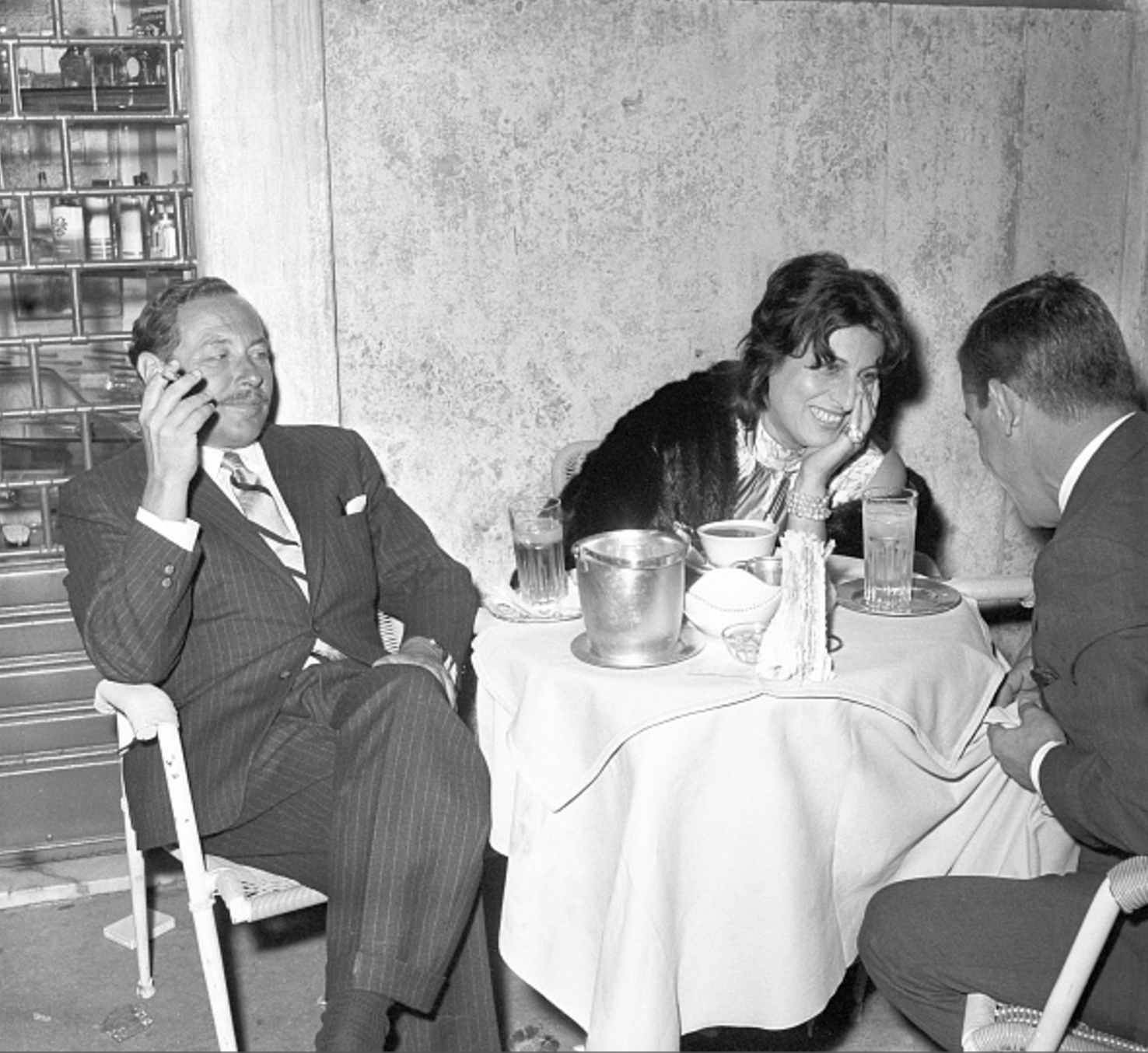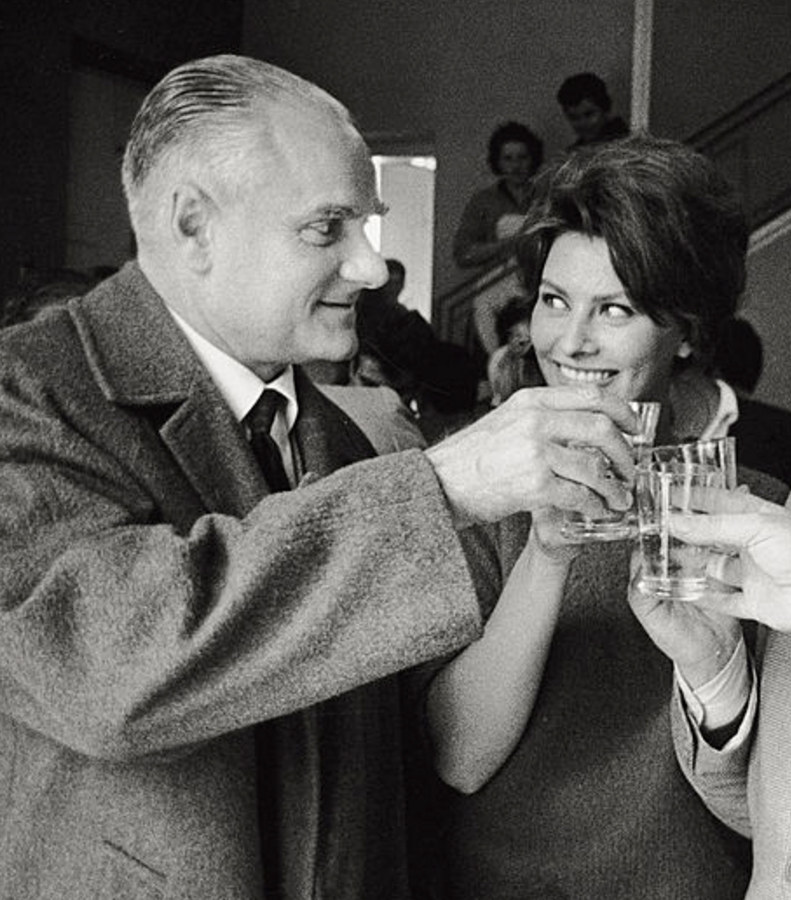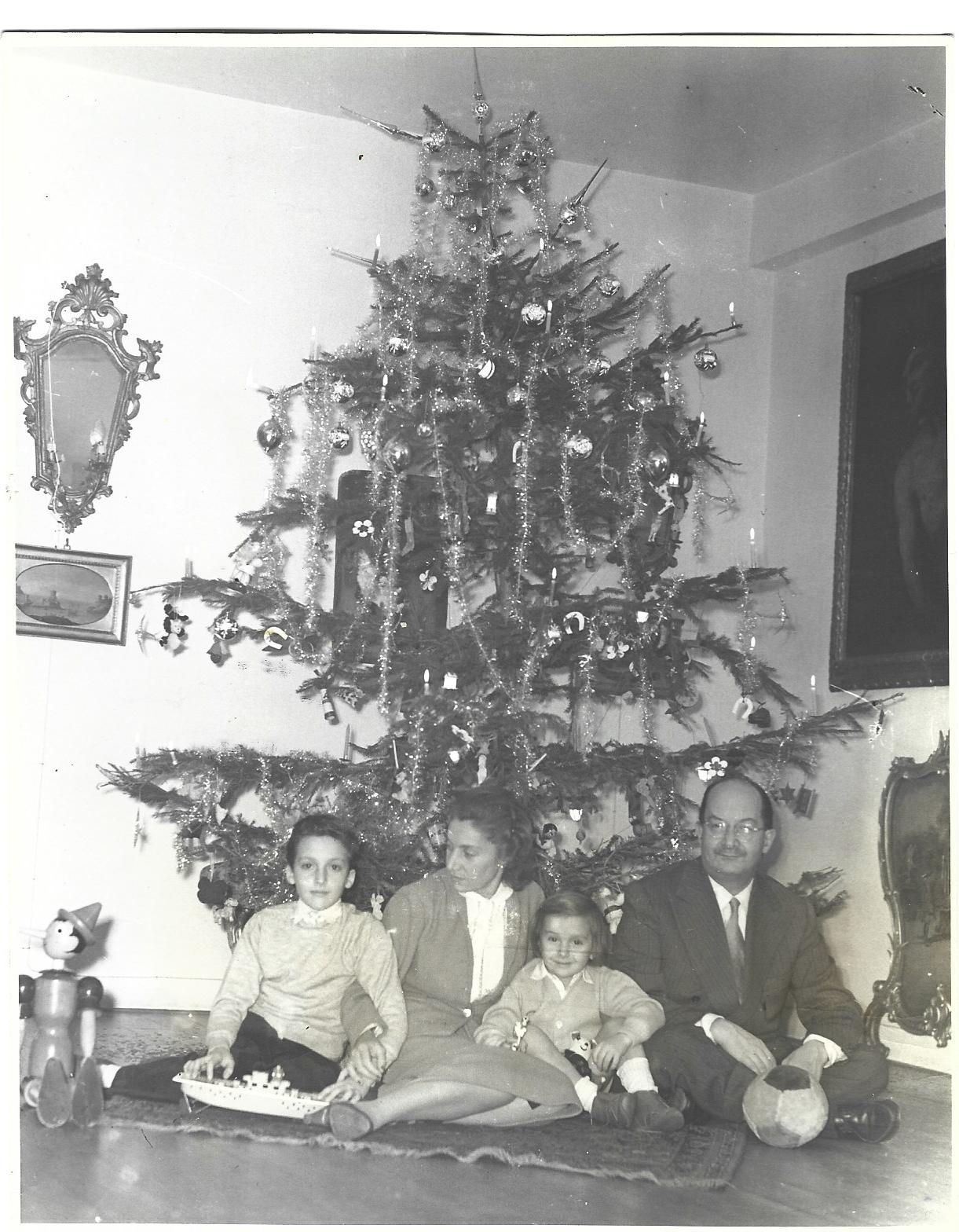The Family
The prestige of Eleuteri dates back to 1894, when an elegant café was opened in Via del Gambero, 7 in Rome, just off the Spanish Steps. It soon became one of the most renowned gastronomic destinations in the country thanks to its original array of sweets and confectionery from all of Italy.
Pietro Eleuteri’s art-collecting passion inspired his son Carlo to move into the realm of extravaganza and then to specialize in vintage jewellery. Today, Eleuteri is undisputedly regarded as Italy’s primary vintage and antique jewellery destination, boasting clientele ranging from the Italian aristocracy to fashion creators, businessmen and the international jet set.
Collections of exceptional vintage jewels by esteemed maisons like Bulgari, Cartier, and Van Cleef & Arpels sparkle inside cabinets alongside 18th century coral pieces from southern Italy. Rare silverware and precious baubles shine with the brilliance of diamonds, rubies, emeralds and sapphires. The interiors of Eleuteri’s stores are heightened by prominent antique and modern artworks by artists such as Reynolds, Boldini, Balla, Fontana, Wildt, Burri, Boetti, Christo and Allen Jones.
Eleuteri has had the honour of lending its jewels and artworks for exhibitions held at prestigious institutions such as the The Royal Academy of Arts in London, The Musée d’Orsay in Paris, The Fortuny Museum in Venice, la Venaria Reale of Turin, the American Museum of Natural History in N.Y. and The Bulgari Museum in Rome, among others.
The company’s historic headquarters are based in Rome’s eminent Via Condotti 69, while other Eleuteri boutiques can be found in high end shopping streets in Milan, Venice, Cortina, Porto Cervo, St. Moritz and New York City. In recognition of its superb collection, Eleuteri is often featured internationally in notable publications, including Vogue, The New York Times, and The Wall Street Journal.
Representing the third generation, Carlo’s son Wagner has joined the family business and is proud to continue the Eleuteri legacy.
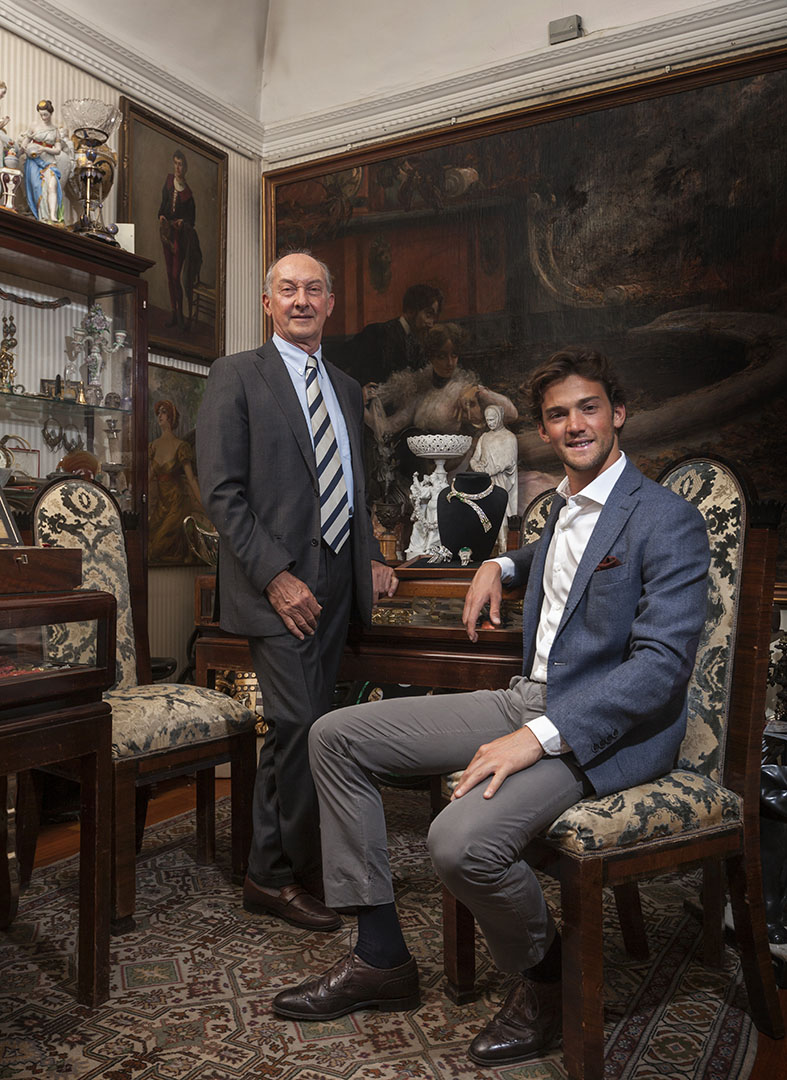
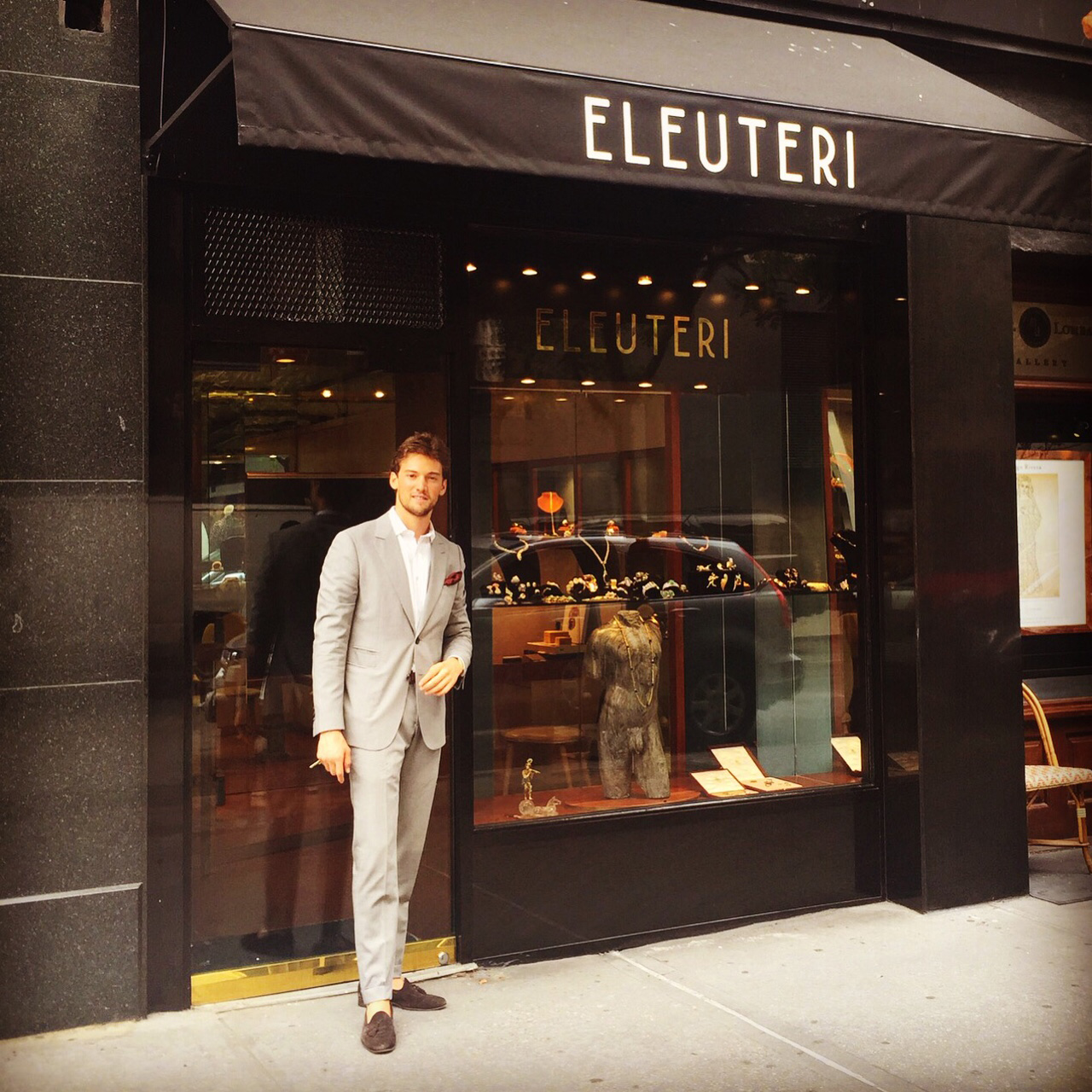
Wagner
Being the heir to two of Italy’s finest jewellery dynasties, Wagner was born with a love for jewels. On the one hand, Eleuteri, associated with the finest of art and luxury. On the other, the Rizzoli family. His maternal grandfather, the late Venice-based jeweller Herriz, had a profound passion for the work of Carlo Scarpa, commissioning him the design of both his boutique and showroom, based in Calle Larga XXII Marzo, San Marco, which housed a magnificent collection of antique and vintage jewels.
Born to a Roman father and a Venetian mother, Wagner lived in Rome until the age of sixteen when he left the Italian peninsula, the cradle of arts, to attend the prestigious Sevenoaks School in Kent, UK, to receive the International Baccalaureate diploma. Following his time in the UK, he travelled to New York to complete, achieving the highest grades, the Graduate Diamonds program at the Gemological Institute of America. The culmination of his academic career was an Upper Second Class Honours Degree in International Relations from the London School of Economics, graduating in June 2010.
Upon concluding his education Wagner immediately entered the jewellery industry. He began in Jaipur, India, where he worked at The Gem Palace, a worldwide renowned jewellery entity. He then returned to Italy to run the Eleuteri firm alongside his father Carlo, absorbing the eclecticism and know-how required in the niche field of precious vintage jewels and objects of vertu. In his managerial role at Eleuteri he was exposed to the industry’s countless responsibilities; from procurement to sales, from marketing to public relations. In autumn 2014 Wagner’s cherished dream of opening a store in New York, as the first of the forthcoming international locations, began to take shape. Less than a year later, in August 2015, that ambition became a reality when Eleuteri inaugurated a boutique in Manhattan, currently located at 780, Madison Avenue.
Carlo
Born in Rome in 1950, Carlo was soon exposed to the fascinating world of antiques. Although he was the owner of a most renowned Roman café, his father Pietro was a passionate art collector and opened the first antique store of the family, 1960, in via Mario de’ Fiori 9, just off Via Condotti. When the latter unexpectedly passed away while Carlo’s teenage years were still blooming, the Eleuteri family decided to change trade, switching from sweets to antiques.
Carlo soon became the main household supporter and as an intrepid 21 year-old opened his first shop in 1972, in the southern Italian seaside town of Maratea. Here, he stumbled upon estate jewels when an old lady walked in offering him a long lariat necklace. He acquired it, unaware that one hesitant choice would turn into his lifetime path. With some skepticism, he placed the piece in the tiny shop window. It sold the next day. Later that same week, another lady walked in asking if it was true that he bought old gold. What she had was a pair of chunky earrings and an equally showy bracelet, typical examples of southern Italian jewellery. Carlo bought them, put them on display in the window, and a couple of days later they too were gone. And with that, a specialty in vintage jewels was born.
Today, in addition to his historical Roman flagship, Carlo Eleuteri has satellite boutiques in the most exclusive shopping streets around the country, as well as in New York and in Saint Moritz. In addition to being recognized as a global leading figure in the world of antique and vintage jewels, Carlo is also a devoted art collector as per family tradition, though with a twist. His collection is an extremely varied gathering of paintings, sculptures and unusual objects from several periods: from large portrait by Boldini to Allen Jones’ provocative pop art; from 18th century Chinese jade to Lucio Fontana’s Cuts, from 19th century silver gilt Indian furniture to Italian Futurist Balla master. Carlo is indeed a true lover of excellence, rarity and extravagance.
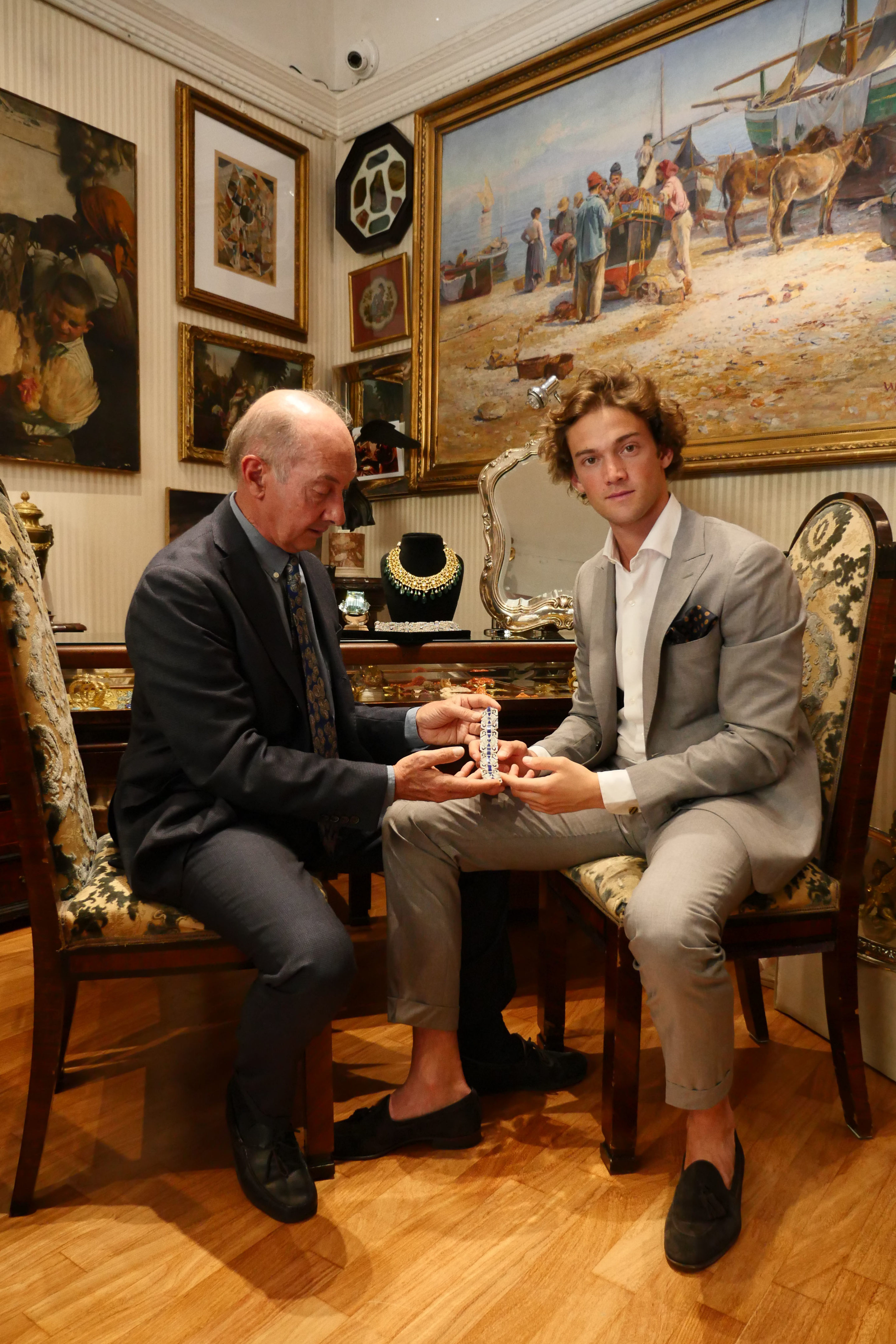
2019
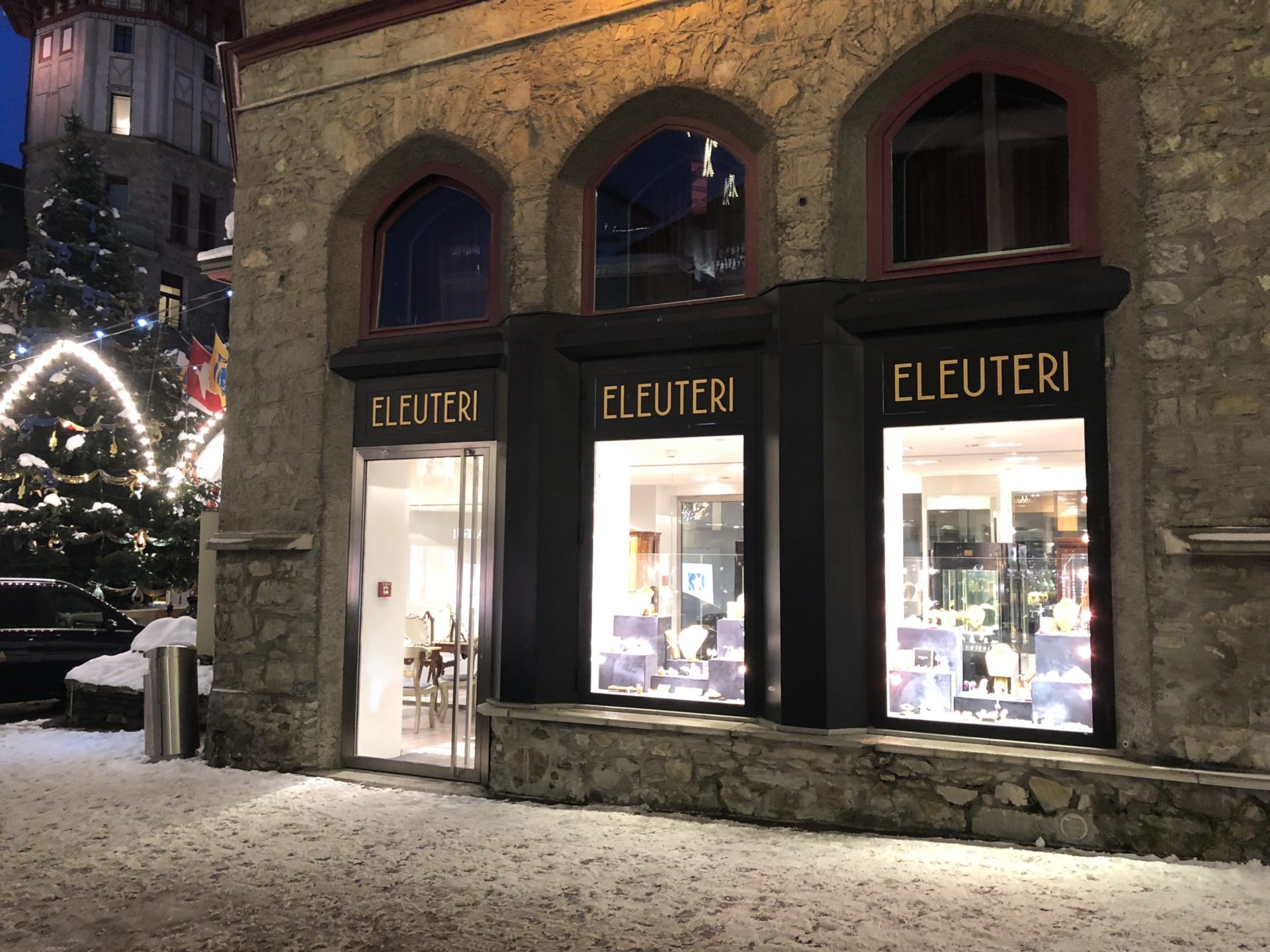
In the winter of 2019, Eleuteri opens a beautiful store in St Moritz (Switzerland) at Via Serlas 27, right next to the glamorous Badrutt’s Palace.
2017
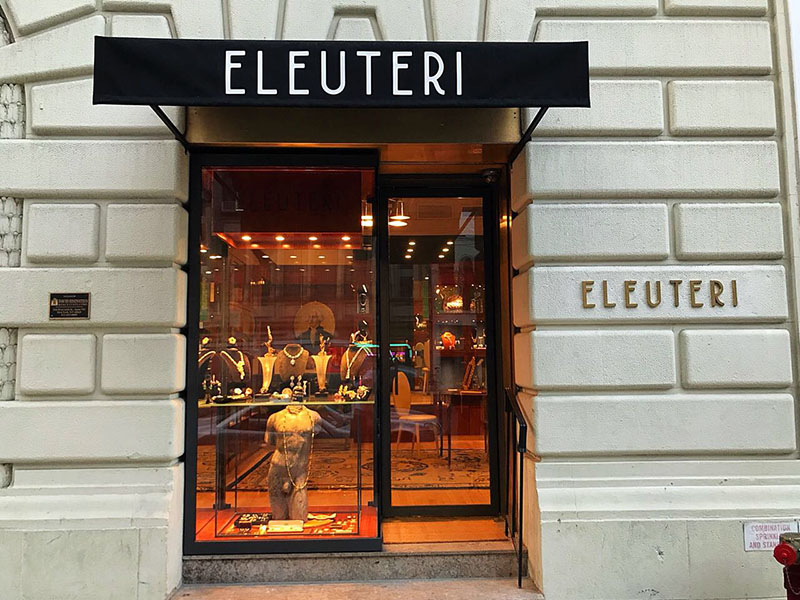
In December 2017 Eleuteri opened a new store in New York, finally on Madison Avenue, at number 780 (between 66th & 67th street).
2016
With seven stores globally, Eleuteri is indisputably regarded as one of the world’s primary sources of antique and vintage jewellery and uncommon works of art.
With further global expansion plans on the horizon, visions of strategic new product developments and Wagner’s sisters Etrusca and Vesta soon to join the company, the possibilities are endless!
2015
In 2015 Wagner initiates international expansion with a bang, opening the first Eleuteri store outside of Italy on 69th street in New York. He also strengthens the company’s online presence, as well as the communications and marketing strategies.
Carlo and Wagner currently acquire pieces from all over the world.
The total number of pieces available at Eleuteri stores worldwide numbers in the several thousands.
2014
In 2014 Eleuteri exhibits at the prestigious Masterpiece London Jewellery and Art Fair.
Eleuteri also boasts a prominent art collection with works from Giovanni Boldini and Joshua Reynolds, Giacomo Balla, Alighiero Boetti, Alberto Burri, Christo, Lucio Fontana, Allen Jones, and Adolfo Wildt. In 2014 Eleuteri began a series of loans for art exhibitions in prestigious museums including The Royal Academy of Arts in London,
the Musée d’Orsay in Paris, and The Fortuny Museum in Venice, la Venaria Reale of Turin, and the American Museum of Natural History of N.Y..
2012
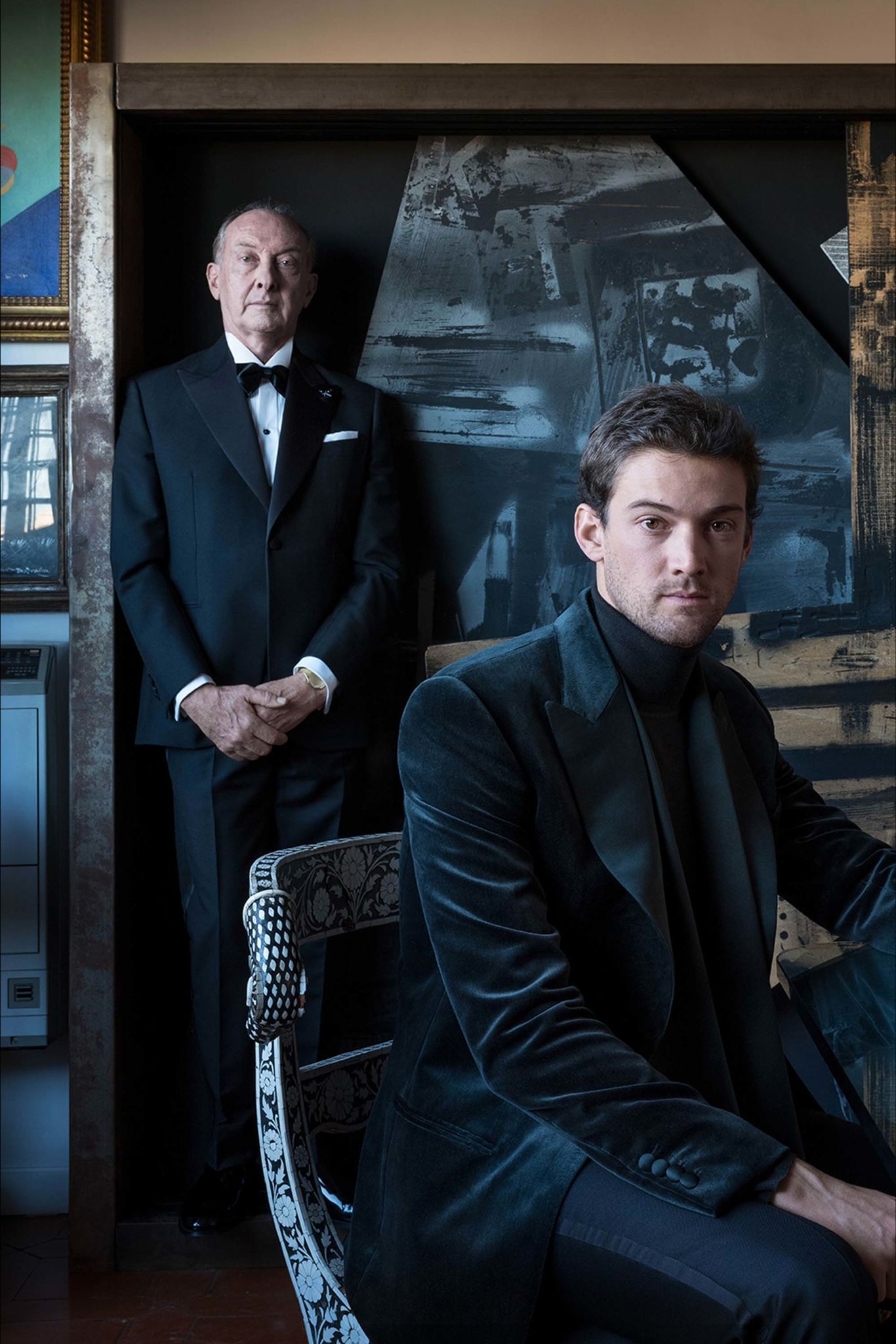
After graduating with honours from the London School of Economics, Carlo’s son Wagner
attends an apprenticeship at the Gem Palace in Jaipur and works in New York’s Diamond
District. In 2012 he then joins the family firm, and with great drive and ambition propels it
into the 21st century.
Eleuteri counts some of the world’s most prominent people as admirers, including Silvio
Berlusconi, Dolce & Gabbana, Chiara Ferragni, Massimiliano Fuksas, Laurene Powell Jobs,
Steve Jobs’wife, Elton John, Katy Perry, Rihanna, Harry Styles, H. H. Royal Qatar Mozah
Al Thani, members of the Saudi Arabian Royal Family, H. H. the Suntan of Brunei,
members of the Getty family, as well as countless celebrities and socialites.
2007-2010
In 2007 Carlo acquires an outstanding lapis, diamond and enamel elephant necklace from Bulgari, circa 1970, formerly owned by an African royal family, recently exhibited at the American Museum of Natural History.
In 2009, Bulgari launches its first retrospective exhibition in Rome; they feature several pieces from Eleuteri’s collection that take centre stage in the show, including an original Serpenti belt designed and made especially for Diana Vreeland, an extravagant piece that she wore as a necklace.
After Rome, the jewels travel to additional blockbuster exhibitions in Paris, Beijing and Shanghai and Moscow.
Ever since the Rome exhibition, Bulgari has worked with Eleuteri as a remarkable source of jewels in their permanent heritage museum in Rome, as well as for their worldwide touring exhibitions.
2005
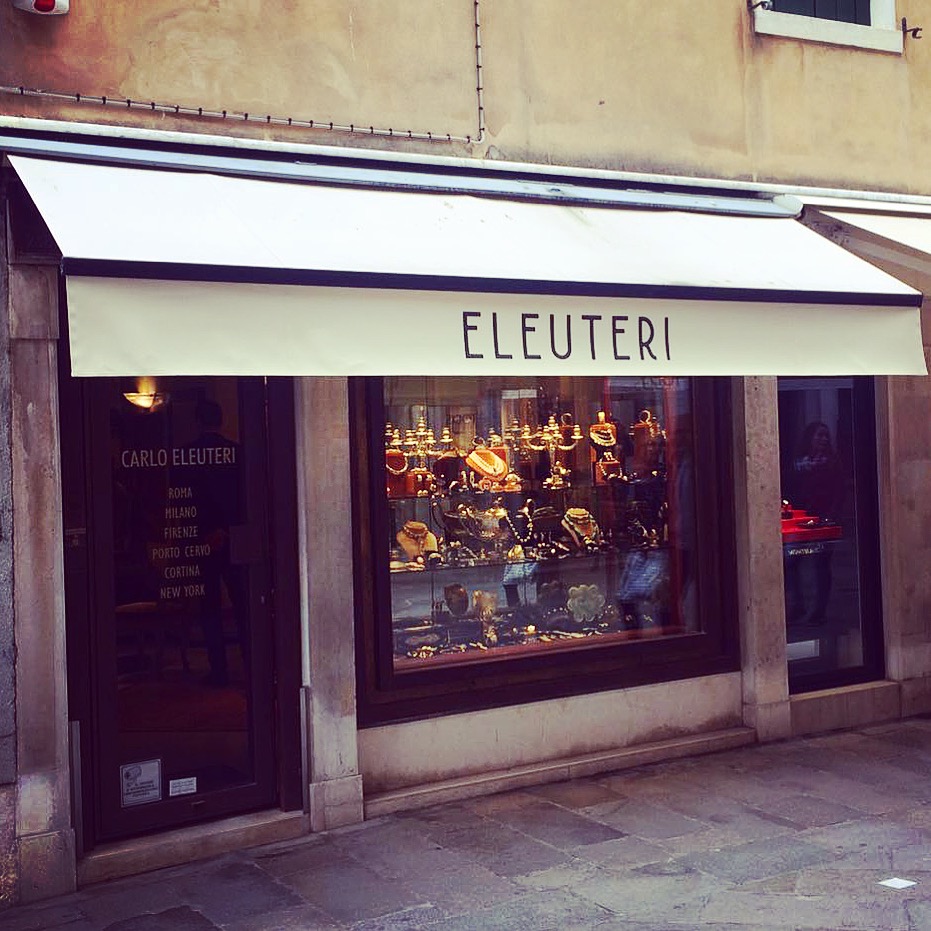
In 2005 Carlo opens a sixth store on Calle Larga, via XXII Marzo, in Venice.
The boutique is the evolution of his celebrated father-inlaw, Erminio Rizzoli, jewellery business.
2003
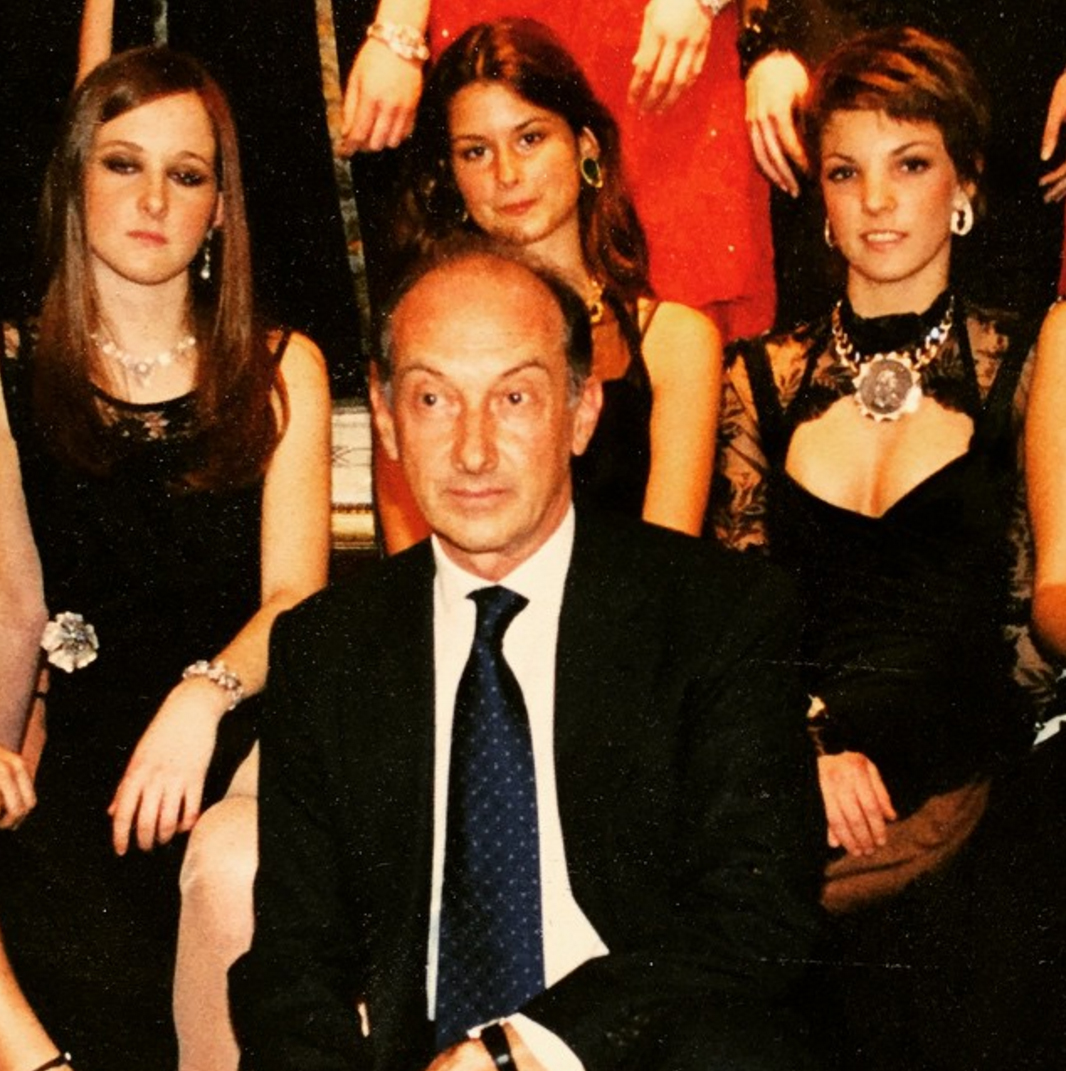
Carlo Eleuteri sponsors the restoration of the beloved Buccolini pipe organ at Rome’s legendary Teatro dell’Opera. The theatre is known around the world for its excellent acoustics; however prior to the restoration, they were unable to use the organ for more than fifty years.
Left: photo from the event.
Of note is the monumental Bulgari Monete necklace worn by the model on the far right. It is currently in the Bulgari Museum in Rome.
1990s
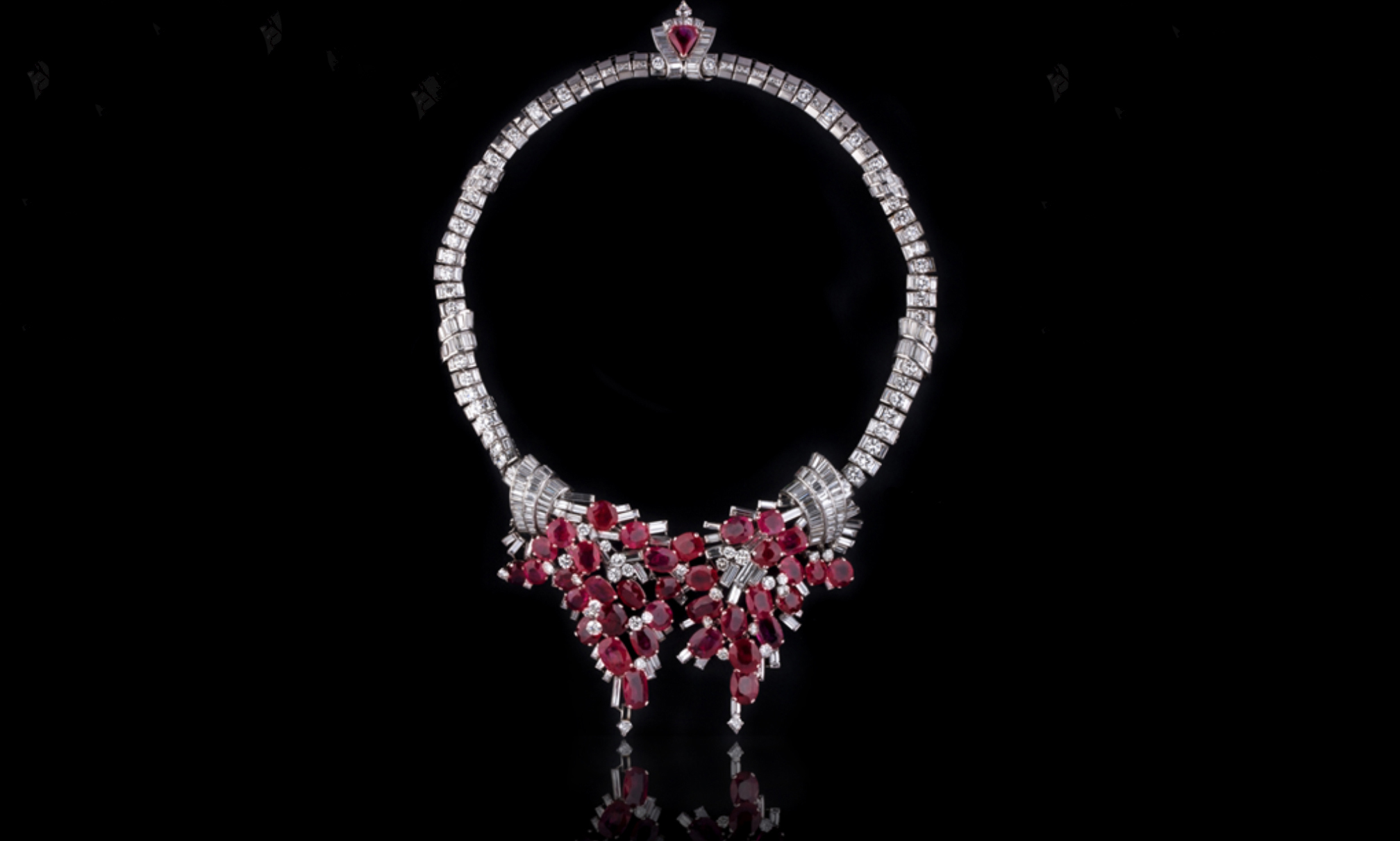
Eleuteri is now known throughout the world as one of the most prominent sources of vintage jewelry, specializing in uncommon pieces by Cartier, exceptional Bulgari items from the 1960s through to the 1980s, and world-famous jewellers, such as Van Cleef & Arpels, Castellani and David Webb.
Carlo opens a fifth store in Florence.
In the early 1990s Carlo acquires one of Eleuteri’s most remarkable pieces: an exceptional Cartier necklace made with over 100 carats of natural Burmese rubies and diamonds, 1938, highlight of the “Ruby” book by Thames & Hudson.
1989
Eleuteri acquires the Torlonia Emerald, a 415 carat sugarloaf Colombian emerald, carved with a heart shaped motif in India in the mid-nineteenth century, once owned by an esteemed Maharaja, before passing to the Torlonia family just after WWII.
Left: Duke of Torlonia handling the enormous stone and Eleuteri Milan store vitrine.
1981
In 1981 Carlo meets future wife Lodovica at a Christie’s auction in Geneva.
Lodovica’s father was the Venice-based jeweller Erminio Rizzoli, known as Herriz. His profound interest for the work of Carlo Scarpa led him to commission the design of both his boutique and showroom on Calle Larga via XXII Marzo, San Marco, in Venice, which housed a magnificent collection of jewels and important gemstones.
Left: Herriz and Lodovica Rizzoli with Wagner in Venice in 1990.
1980s
In 1983 Carlo relocates his store directly onto Via dei Condotti, Rome’s most exclusive shopping street. Some of Carlo’s new neighbours include Bulgari, Cartier, Valentino and Buccellati.
Carlo decorates the interior to resemble an enchanting and elegant Wunderkammer, a cabinet of curiosities filled with treasures. Nineteenth-century art hangs on the walls (covered in shimmering fabric), and vitrines overflow with precious objects of all kinds – necklaces and bracelets in coral and semi-precious stones, strands of natural pearls, silver candelabra, inlaid and jewelled compacts, decanters and extravagant sets of tableware.
The shop’s colourful window displays become irresistible to passers-by, gathering regular throngs of observers. Carlo’s impressive clientele of boldfaced names includes Gianni Versace, Diego della Valle, Miuccia Prada, Silvio Berlusconi, Karl Lagerfeld, and the Fendi sisters, among others.
1972
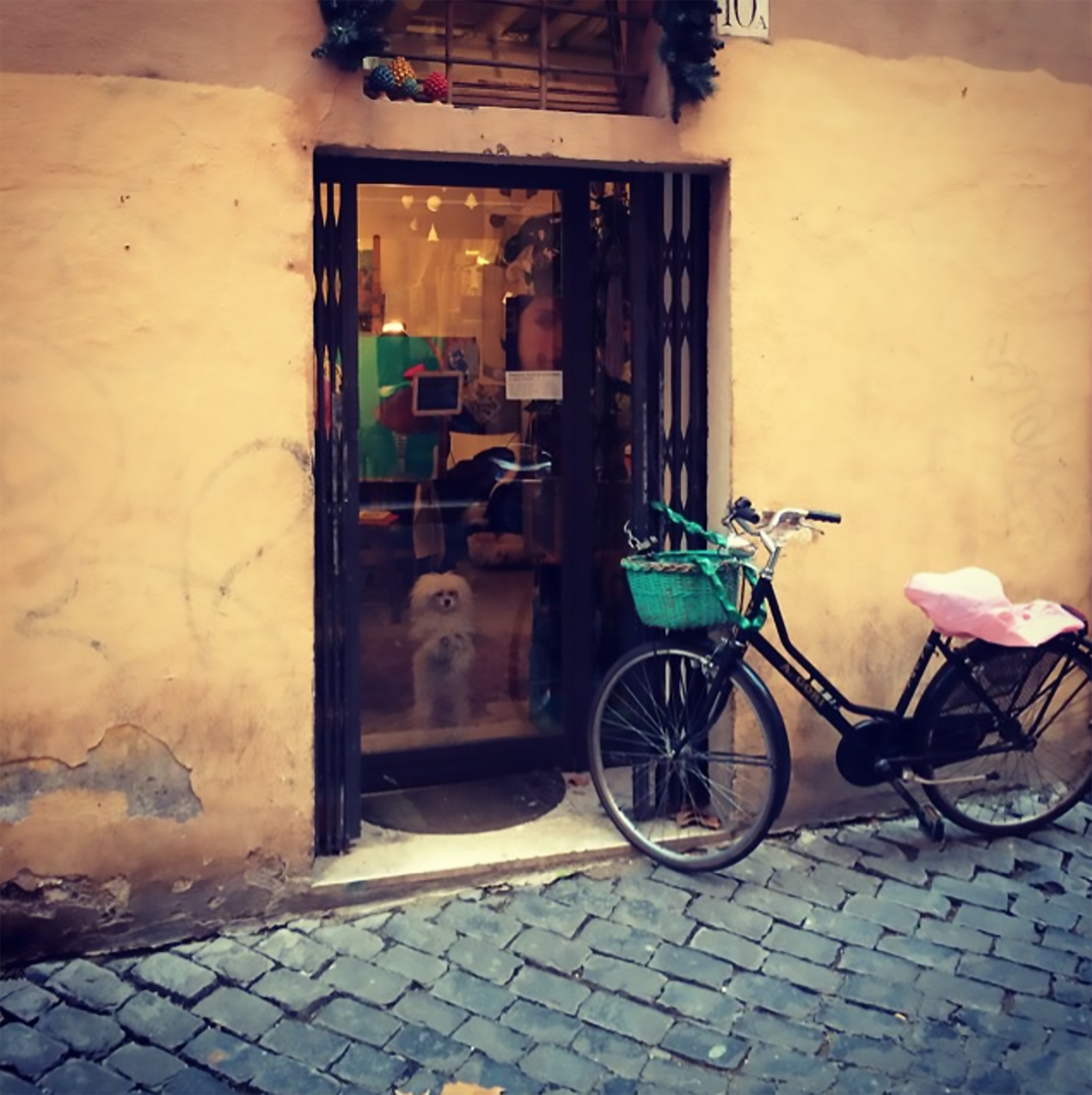
Carlo’s success in Maratea allows him to open his first tiny store in Rome, in Via del Fiume 22, where he sells primarily jewellery, along with art and other precious objects he finds all over Italy. By 1977 his business has grown exponentially and he moves into a larger space on Via Mario dei Fiori, the original family store.
1960s
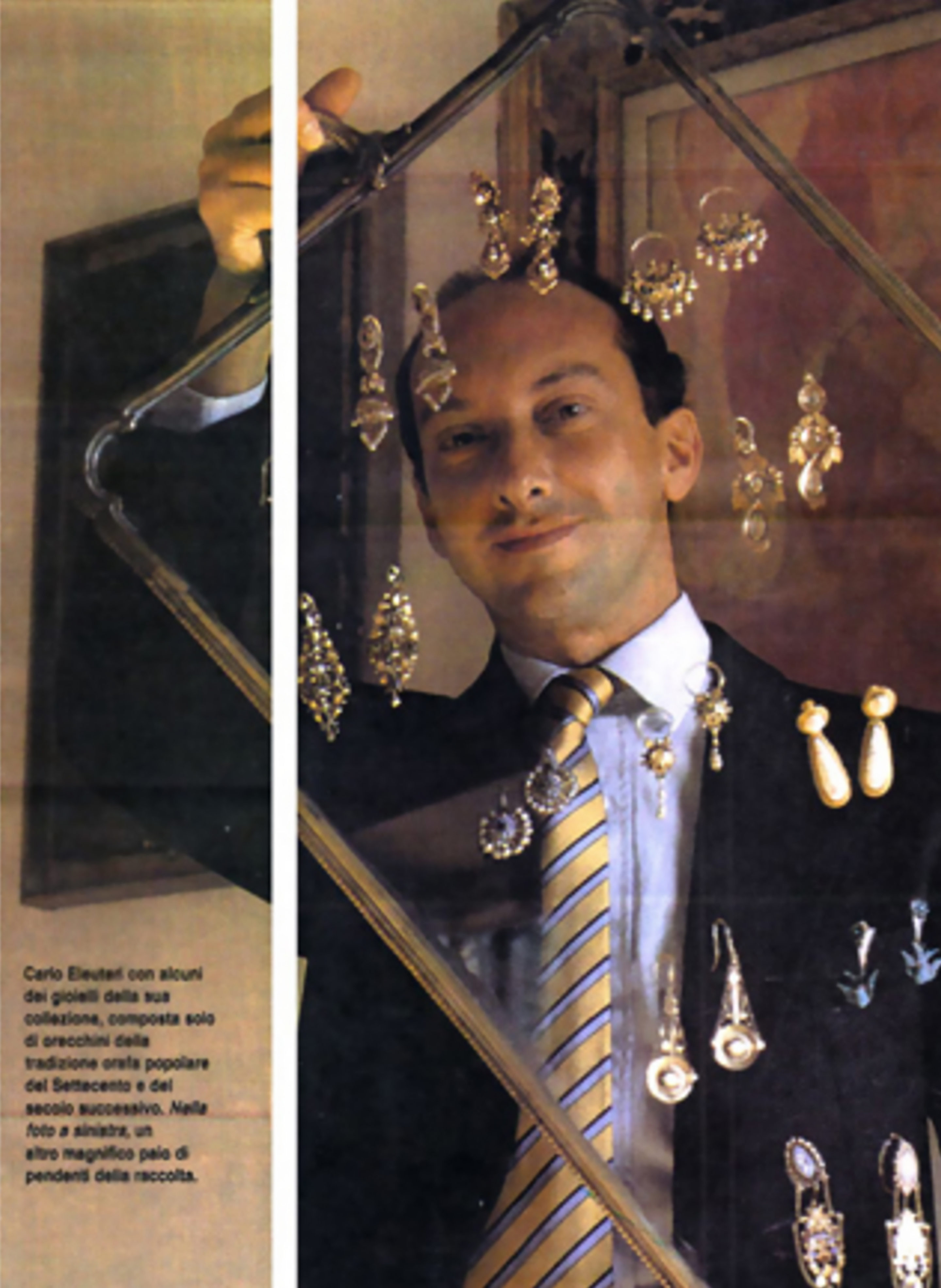
Upon Pietro’s death in 1967, his son Carlo enters the business with the help of his mother Angiola and older brother Egidio. Now an intrepid 19 years old, Carlo has inherited his father’s love for collecting and opens in 1972 his first tiny shop in Maratea (a small seaside town in Southern Italy), where his sole focus is antiques.
One day he stumbles upon the world of jewellery, when an elderly woman dressed in black veils enters the store and offers him a gold lariat necklace.
He places it in the front window, and it sells the next day. Unaware that this will change the course of his life, Carlo greets a second lady who presents him with earrings and a bracelet. A couple of days later they too are gone. He tenaciously adds jewellery to his business and begins collecting 19th century Southern Italian peasant jewels.
1950s
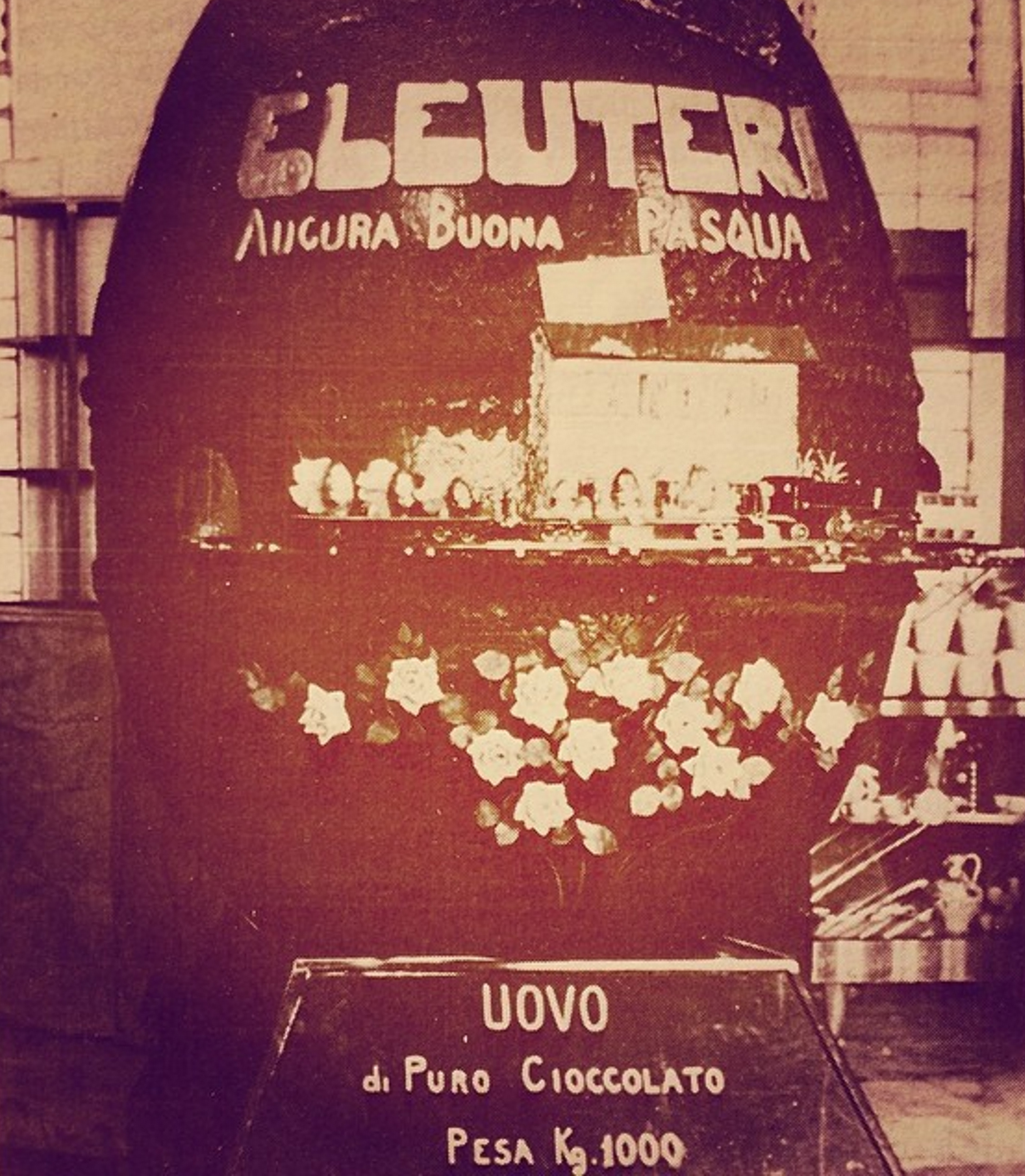
After WWII Pietro Eleuteri delights people all over Rome with his spectacular Uova di Pasqua, elaborately decorated chocolate Easter eggs, which all house extraordinary surprises. Each year the press and other admirers flock to his café to witness the unveiling of these enormous, seven-foot tall eggs.
Usually the surprise inside is an extravagant child’s toy, like an electric train set moving on tracks throughout the interior of the egg.
One year the egg hatches to reveal a 4 year-old Carlo, dressed as a blond cherub. Left: Eleuteri chocolate Easter egg. Weighing over one ton, it is made entirely of chocolate.
1930s-1940s
Throughout the 1940s it becomes a favorite destination for Roman aristocracts, actors, artists, politicians and writers: actress Anna Magnani, writers Carlo Levi and Alberto Moravia, Count Geraldini and the Duke of Torlonia are among the regular clientele.
The visitors repeatedly praise Pietro’s collection of objets, and he ponders the idea of selling them.
1894
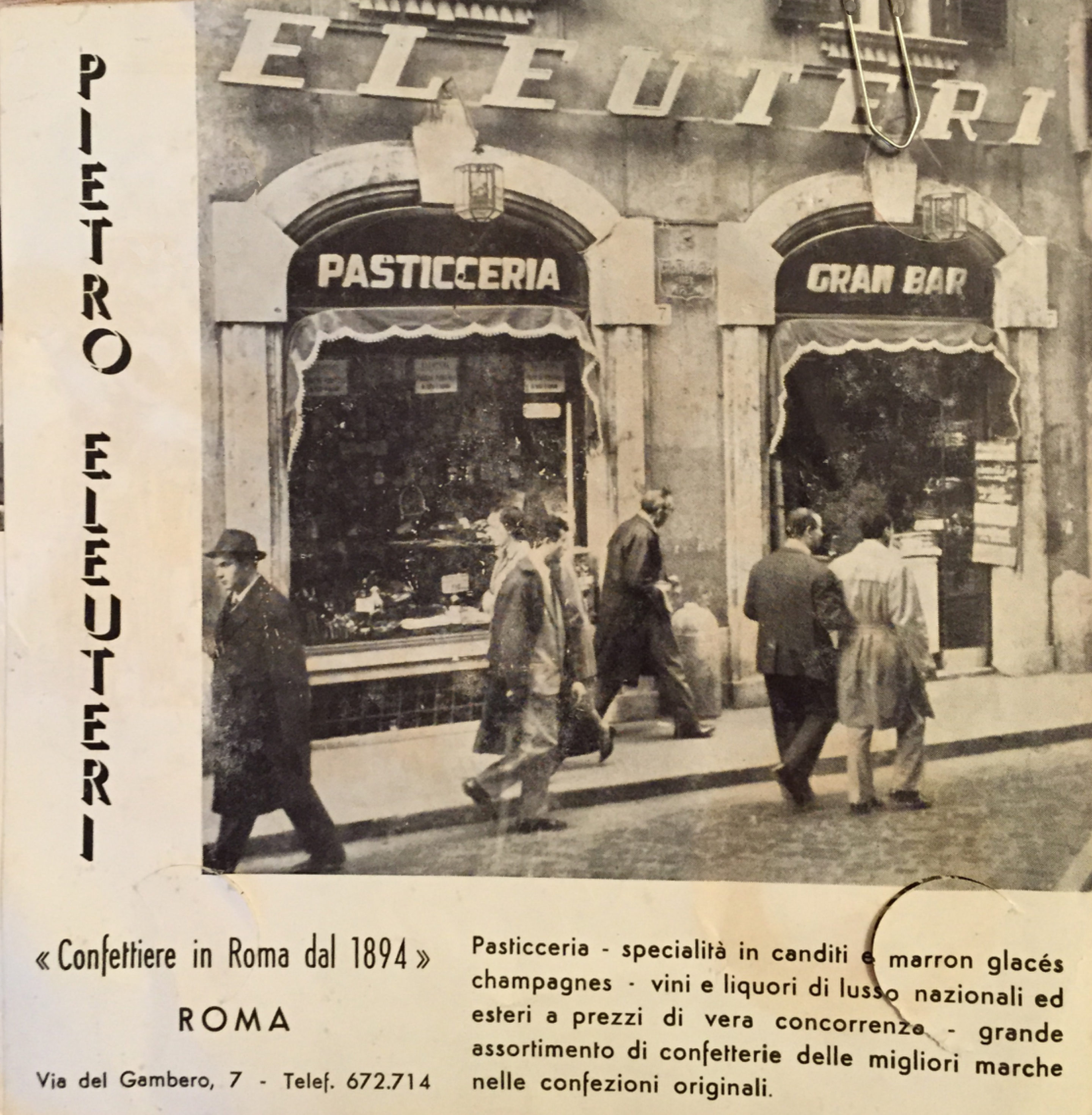
Egidio Eleuteri opens an eclectic and elegant Gran Café in Rome on Via del Gambero, located near Italian Parliament.
The tantalizing aromas of their pastries, candied fruits and superior coffees fill the air of the Eternal City
19th Century
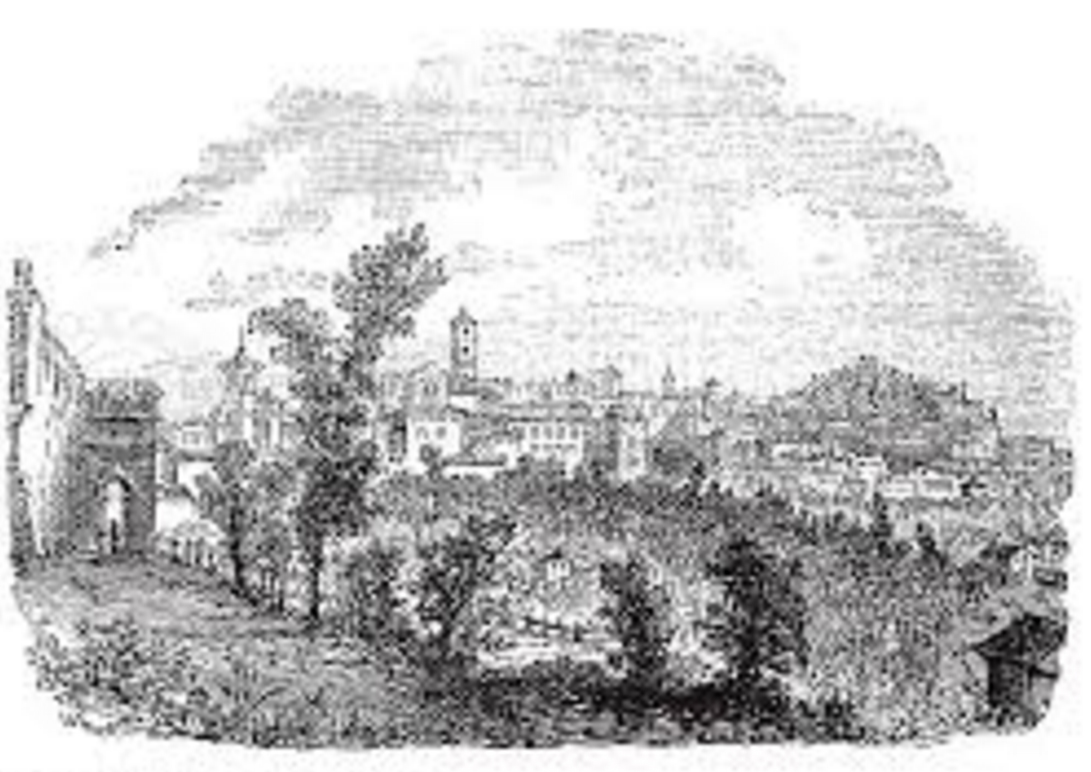
In the early 19th century, the Eleutheri (ἐλευθερία, Greek word for “freedom”) family leaves Greece and ends up settling in Castelluccio di Norcia in Umbria, the original hometown of the Benedictine Monks of the Order of St. Benedict.
In 1894, Egidio Eleuteri, third generation of the Italian Eleuteri family makes a fifteen-day, 100-mile pilgrimage on foot from Umbria to Rome in pursuit of better fortune.

